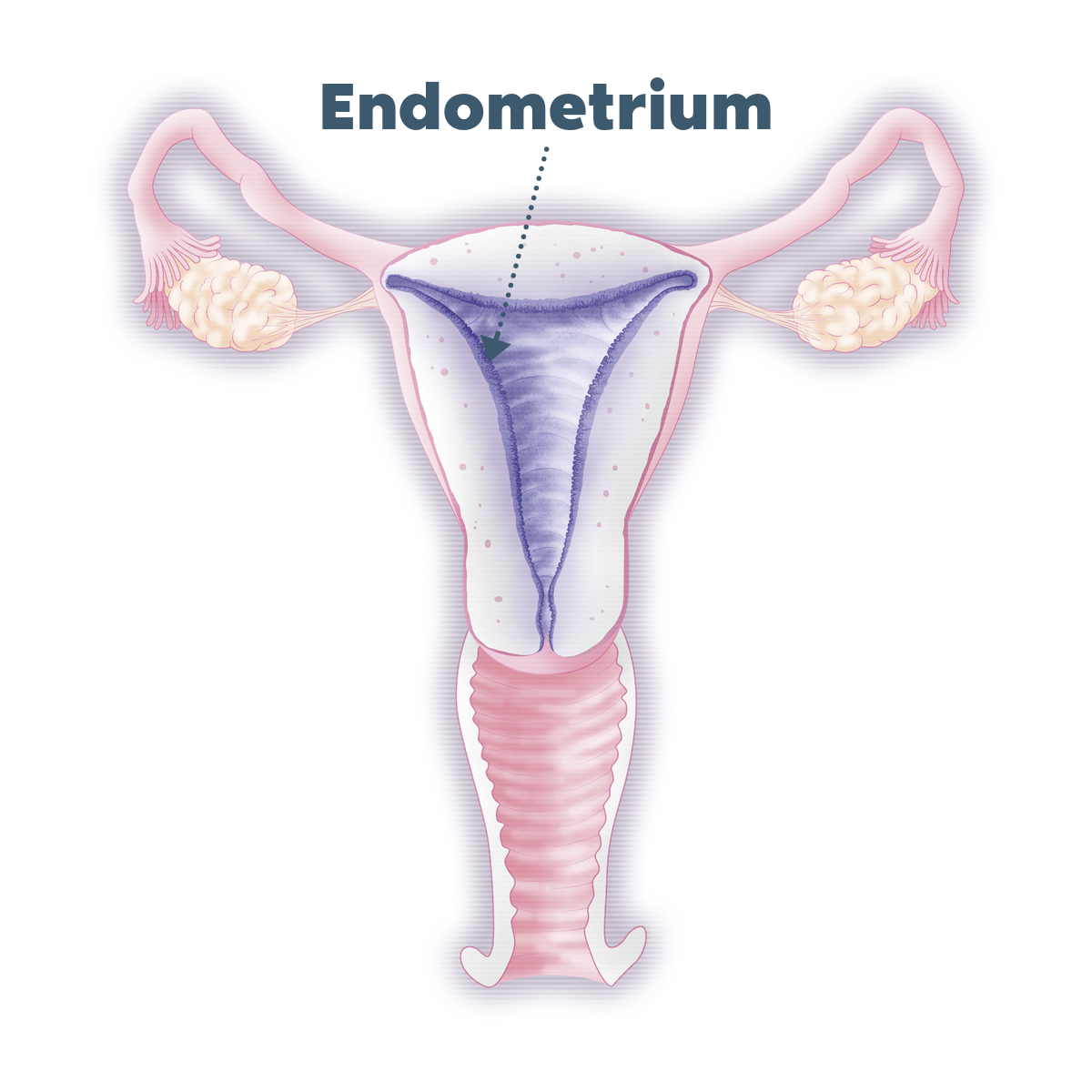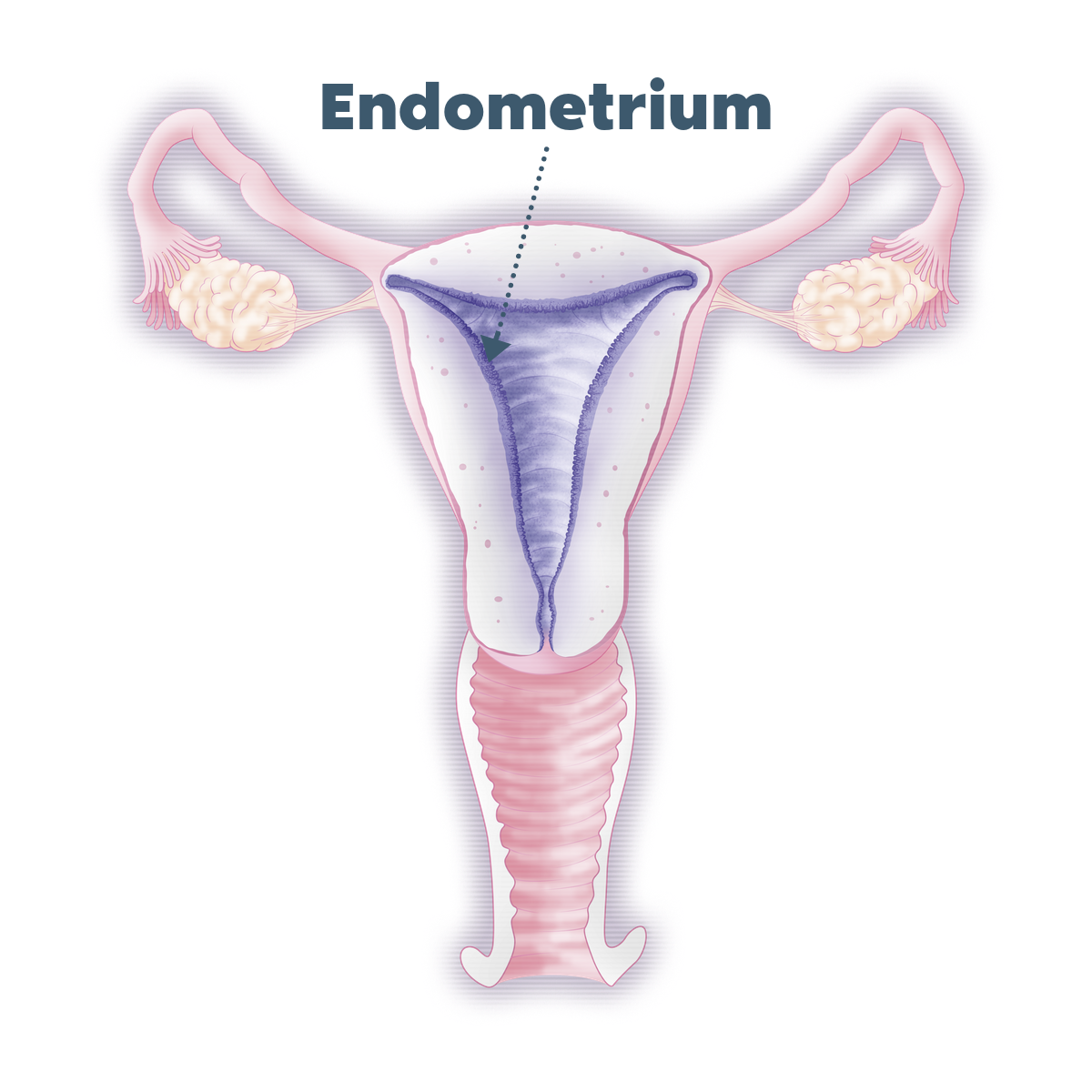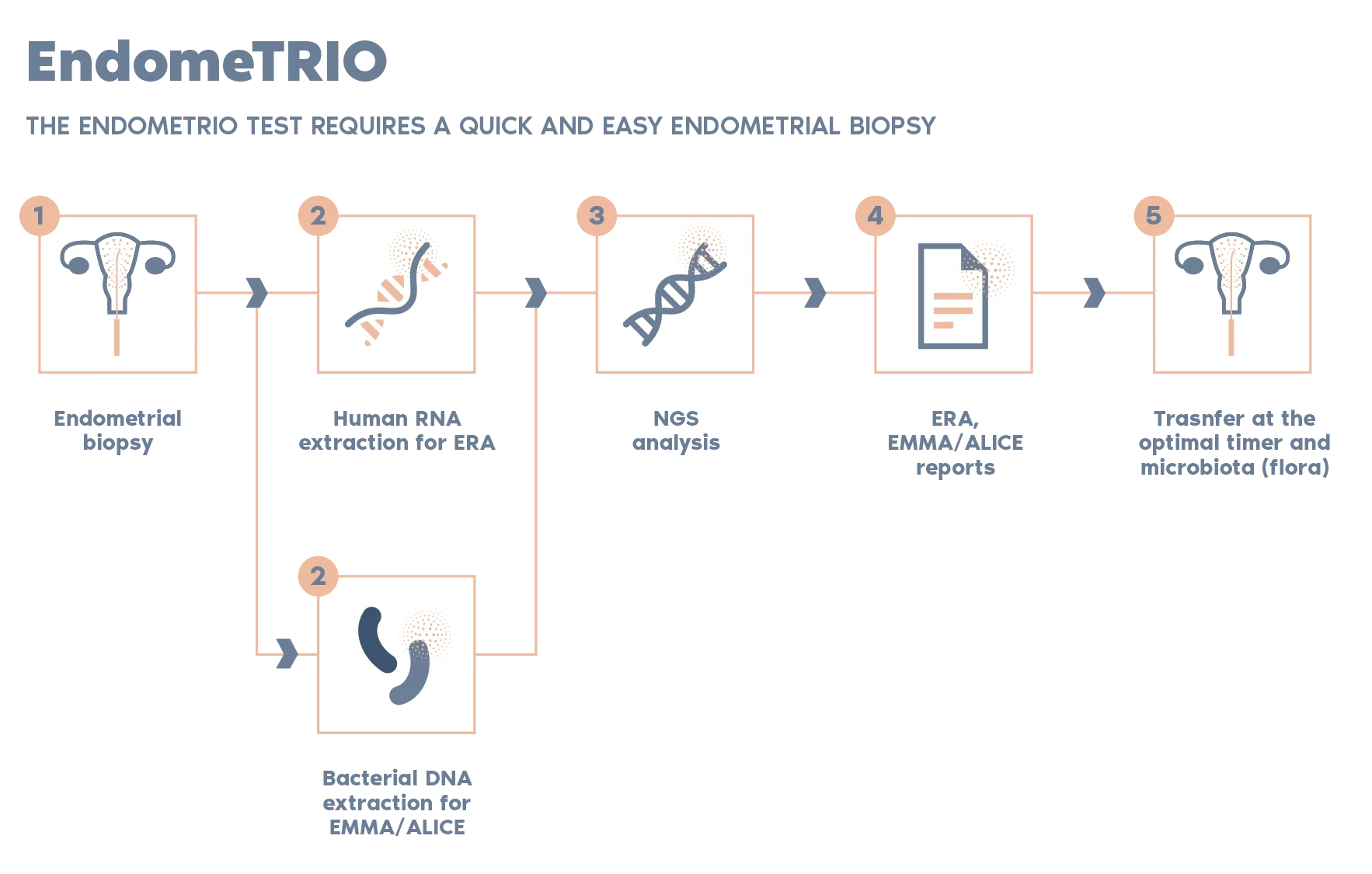EMMA Endometrial Microbiome Metagenomic Analysis
The most comprehensive and precise panel, encompassing the most frequently detected and clinically relevant bacteria to evaluate the endometrium at the microbiological level

30% of infertile women have pathogenic bacteria in their endometrium

Upgraded EMMA panel: the most precise panel available, developed after analyzing over 70,000 clinical samples during the last 5 years

The upgraded EMMA panel now identifies bacteria at the species level, enabling more precise and targeted treatments
Many women undergoing IVF are unable to get pregnant, even after transferring good-quality embryos. Although a good-quality embryo is an important starting point, it is also important to transfer the embryo into a uterus that is in the healthiest state possible.
What is the endometrium and why does it matter?
> The endometrium is a tissue lining the interior of the uterus where the embryo implants and resides during pregnancy. Each month, the endometrium prepares for the arrival of an embryo. When this does not occur, menstruation begins.
> Problems with the endometrial lining are one of the leading causes of infertility in women. A healthy endometrium is rich in healthy bacteria: the endometrial flora. Infections with harmful bacteria can cause diseases of the endometrium, such as chronic endometritis.

What is endometrial flora?
The endometrial flora or microbiome is the sum of the microorganisms and their collective genetic material present in the endometrium.
What is EMMA test?
EMMA evaluates your endometrial microbiota detecting the most common bacteria present in the endometrium, including the good ones.
EMMA also includes the ALICE test to identify the pathogenic bacteria most commonly associated with chronic endometritis.
We are then able to recommend the best probiotic and/or antibiotic treatment to balance your endometrial flora, improving your pregnancy prospects.
We have analyzed more than 70,000 clinical samples during 5 years of experience.
Thanks to our experience with EMMA&ALICE tests, we know which are the most often bacterial pathogens detected in the endometrium.
Based on this data, we have designed the most comprehensive and precise panel, encompassing all clinically relevant bacteria, with most identified at the species level, enabling more precise and targeted treatments.
Why use EMMA – Endometrial Microbiome Metagenomic Analysis?
> EMMA uses RT-PCR technology to provide endometrial microbiome information by analysing the presence and quantity of the most common and relevant bacterial pathogens of the reproductive tract.
> EMMA can also determine the abundance of Lactobacillus present in the endometrium; low proportions of Lactobacillus is associated with poor reproductive outcomes.
> EMMA also includes ALICE, which detects pathogenic bacteria that can cause chronic endometritis.
> EMMA determines whether the endometrial microbial environment is optimal or not for embryo implantation.
> If the endometrial microbial environment is not optimal for embryo implantation, a recommendation for a precise and targeted treatment is provided.
Is EMMA for you?
This test is recommended if:
> If you want to become a mother, you can benefit from the greater knowledge about your endometrium that the EMMA test offers
> This test is especially useful if you have suffered recurrent implantation failures or repeated miscarriages during your IVF cycles.







